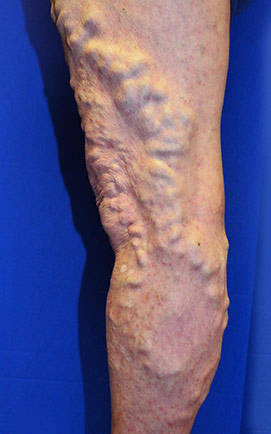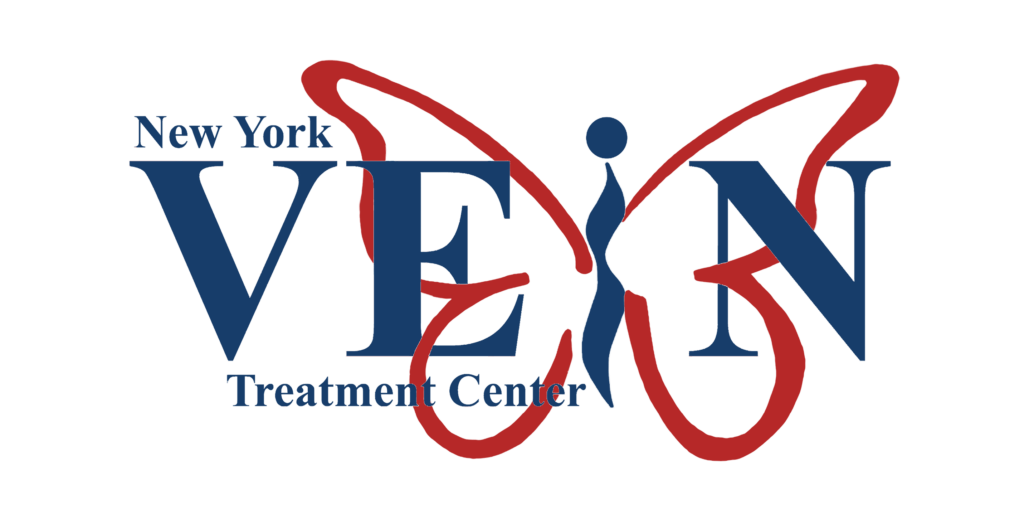At the very least, varicose veins are unattractive. We try to cover them up with shoes and clothes, but the reality is that they’re still there. Unless these veins begin hurting, we usually do our best to ignore them.
What you may not know is that varicose veins pose potential threats to our health and well-being. At the New York Vein Treatment Center, we specialize in varicose vein treatments. We want you to know the facts about varicose veins and when it’s time to give us a call.
Varicose Veins
Varicose veins occur when the vein valves become weak. This makes it harder for these veins to pump blood back to the heart.
Varicose veins appear as purple or blue-hued cords or ropes under the skin. They can also look like twisted veins protruding through the skin.
Many times, varicose veins form in your legs since these veins work the hardest to pump blood back to the heart. When looking for varicose veins, begin your examination at your feet and work upward.
Health Issues Related to Varicose Veins
You may assume that since you don’t have symptoms such as pain and itching from your varicose veins, you don’t have to be concerned.
The truth is that untreated varicose veins can lead to more severe health issues:
- Ulcers
- Hyperpigmentation
- Spontaneous bleeding
- Lipdermatosclerosis
- Deep vein thrombosis
- Superficial thrombophlebitis
Not all of these health issues pose serious threats, but of most significant concern is deep vein thrombosis. Deep vein thrombosis involves blood clots forming in your veins. If a blood clot dislodges from the vein, it can travel to your lungs, causing a pulmonary embolism.
Varicose Vein Symptoms
Besides bulging and vein discoloration, varicose veins can present other symptoms:
- Aching
- Burning
- Itching
- Sores
- Rashes
- Swelling
- Bleeding
- Warm to the touch
- Emotional impacts such as stress and anxiety
Talk to your doctor or local varicose vein treatment center about treatment options when experiencing any of these or other symptoms related to your varicose veins.
Varicose Vein Treatment Options
Unlike in the past, the majority of varicose vein treatments are noninvasive. This means these treatments target affected veins in a way that doesn’t damage surrounding healthy tissue.
Varicose vein treatments involve procedures that deliver little to no pain to patients. Most of them are also outpatient treatments.
Endovenous Laser Therapy
Endovenous Laser Therapy is an outpatient procedure that involves sealing the vein shut using thermal energy. Guided through ultrasound, the doctor places a wire into the vein. This wire uses laser energy or a radio frequency current to cause scarring within the vein. The scarring closes the vein.
Sclerotherapy
Sclerotherapy is also an outpatient procedure. A solution called sclerosant is injected into the vein through a fine needle. The solution irritates the vein causing it to swell. This swelling closes the vein.
Venaseal Treatment
This treatment is mainly used for superficial varicose veins. Called the VenaSeal Sapheon Closure System, this treatment involves injecting a medical gel polymer into the veins. The polymer injected into the vein causes the vein to seal.
These are just a few treatment options for varicose vein interventions. Always talk to your doctor about which options work best for you and your health.
Lifestyle Changes
Not all varicose veins require treatment, but a doctor can only give this diagnosis.
If your doctor has chosen to monitor your varicose veins, there are certain lifestyle changes you can try. These changes may keep your varicose veins from worsening while relieving certain symptoms.
Maintain a Healthy Weight
Maintaining a healthy body weight helps your veins from enduring excess pressures and helps improve your blood flow.
Reduce Salt Intake
Salt, or sodium, causes your body to retain water. This excess fluid puts more pressure on your veins.
Remain Active
Try to remain active by not sitting or standing for long periods. When you’re sitting, it’s harder for your veins to pump blood back to the heart. When standing, blood pools around your feet, making it harder to pump the blood back to your heart.
It’s also suggested to avoid sitting with your legs above your heart.
Work with your doctor to devise a suitable exercise or activity plan to help you avoid sitting or standing for long periods.
When you’re ready to look for varicose vein treatment clinics, check out the New York Vein Treatment Center. We treat varicose veins from head to toe and offer a range of different treatment plans. Our knowledgeable staff can ensure that the appropriate treatment fits your needs.
Contact us today to schedule a consultation.

Dr. Lev Mark Khitin, a leading cardiovascular and thoracic surgeon, is the founder of the New York Vein Treatment Center. With almost 20 years of experience and over 20,000 successful vein procedures, he is a renowned expert in the diagnosis and treatment of venous disease. Dr. Khitin’s patient-centered approach and advanced surgical skills have consistently delivered excellent results, making him a prominent figure in the field.


